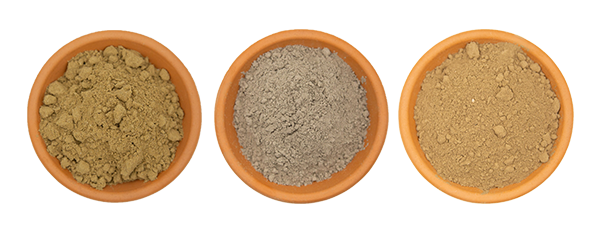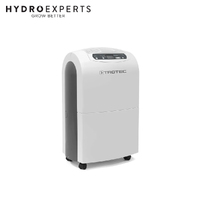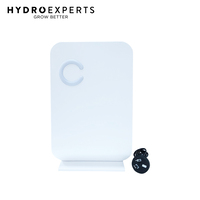Why You Need a Dehumidifier in Your Home? Hydro Experts
By Hydro Experts | 18 November 2025

Your home feels damp. The air is heavy and sticky. You notice condensation on your windows. You smell a musty odor in the basement or your closets. These are all signs of high indoor humidity.
High humidity is more than a comfort issue. It is a threat to your health. It is also a threat to your home's structure.
The air in your home always contains water vapor. Humidity is the measurement of this water vapor. Experts measure this as "relative humidity," or RH. RH is a percentage. It shows the amount of moisture in the air compared to the maximum amount it could hold at that temperature.
A healthy indoor RH is between 30 percent and 50 percent. Problems start when your home's humidity stays above 50 percent for long periods. When RH climbs over 60 percent, you create a perfect environment for allergens and property damage.
You need a way to control this moisture. An air conditioner helps, but its main job is to cool, not dry. An exhaust fan only works in one room. A dehumidifier is the one appliance designed for this specific job. It removes excess water from your air. It protects your health and your home.
The Problems Caused by High Humidity
Many homeowners underestimate the damage caused by damp air. The problems are slow, but they are constant. They affect your health, your comfort, and your home itself.
What Does High Humidity Do to Your Health?

High humidity is a direct cause of poor indoor air quality. It creates the ideal breeding ground for common allergens. These allergens fill the air you breathe.
Mould is the first major problem. Mould is a fungus. It needs moisture to grow. When your air is humid, that moisture settles on walls, ceilings, and in your carpet. Mould spores land on these damp surfaces and grow.
You see these as black spots in your bathroom grout. You smell it as a musty odor in your closet. This visible mould is a sign of a much larger problem. Mould releases spores into the air. You breathe these spores. This causes allergic reactions, triggers asthma attacks, and leads to respiratory irritation.
Dust mites are the second problem. These are microscopic creatures. They live in your mattress, pillows, carpets, and upholstered furniture. Dust mites do not drink water. They absorb moisture directly from the air.
When your home's humidity is high, the dust mite population explodes. The waste from dust mites is one of the most common triggers for allergies and asthma. If you wake up with a stuffy nose or itchy eyes, you likely have a dust mite issue.
Low humidity, below 50 percent, causes dust mites to dry out and die. This reduces their population.
What Does High Humidity Do to Your Comfort?
Humid air feels warmer than dry air. Your body cools itself with sweat. As sweat evaporates from your skin, it cools you.
When the air is full of moisture, your sweat cannot evaporate. The air is already saturated. This leaves you feeling sticky, clammy, and overheated. You feel uncomfortable even when the thermostat shows a reasonable temperature.
This "sticky" feeling affects your sleep. It is difficult to get restful sleep in a room that feels muggy. You toss and turn. The air feels heavy. This is why a dehumidifier for the bedroom is a popular solution. It creates a crisp, comfortable environment for sleep.
Humid air also traps odours. The damp, musty smell in a basement is caused by moisture. A dehumidifier removes the moisture. This removes the smell.
What Does High Humidity Do to Your Home?
.png)
Moisture is destructive. Over time, it causes expensive damage to your house.
Water vapour condenses on cooler surfaces. You see this as "sweat" or fog on your windows. This water pools on the windowsill. It rots the wood. It soaks into the drywall below the window.
In your walls, high humidity causes paint to peel. It makes the wallpaper bubble and lift. Moisture seeps into drywall. This softens the drywall. It also feeds mould growth inside your walls.
Wood absorbs moisture from the air. Your hardwood floors swell and warp. Your doors and cabinets stick. They become hard to open or close. Wooden furniture and even musical instruments warp.
Metal objects rust. Tools in your garage or basement develop rust spots. The delicate electronics inside your TV or computer corrode. This shortens their lifespan.
Your clothes, stored in a damp closet, feel damp to the touch. They develop mildew. This leaves a smell that is hard to remove.
What is a Dehumidifier?
A dehumidifier is an appliance. Its one function is to remove excess moisture from the air. It is not an air conditioner. It is not an air purifier.
An air purifier traps particles like dust and pollen. It does not remove moisture. An air conditioner cools the air. It does remove some humidity as part of the cooling process. But it is not efficient at this.
A dehumidifier is a specialist. It pulls in damp air. It takes the water out. It blows dry air back into the room.
There are two main types of dehumidifiers. The Refrigerant Dehumidifier and The Desiccant Dehumidifier. They remove water using different methods. Understanding them helps you choose the right one.
How a Refrigerant Dehumidifier Works

This is the most common type of dehumidifier. It works like a small refrigerator. This is how it works:
- A fan pulls the damp, humid air from your room into the unit.
- This air passes over a cold metal coil, the evaporator.
- As the air hits the cold coil, the water vapour in the air condenses. It turns from a gas back into liquid water.
- This water drips off the coil. It collects in a bucket or tank inside the unit.
- The air, now dry, continues to move. It passes over a warm coil, the condenser.
- The unit exhausts this slightly warm, dry air back into the room.
Refrigerant dehumidifiers are very effective. They work best in warm or mild conditions, above 15 degrees Celsius. Their performance drops in cold rooms, as the coils get too cold and freeze over.
How a Desiccant Dehumidifier Works

This type uses an absorbent material, a desiccant, to pull water from the air. This is how it works:
- A fan draws damp air into the machine.
- The air passes through a large, rotating wheel. This wheel is made of a desiccant material, like silica gel.
- The desiccant material absorbs the water from the air.
- The dry air is then blown back into the room.
- To clear the desiccant wheel, a small internal heater warms a separate stream of air.
- This hot air passes through the wheel. It pulls the moisture out.
- This hot, wet air is vented away.
Desiccant dehumidifiers work well at all temperatures. They are an excellent choice for cold, damp spaces. This includes unheated basements, garages, or boats. They are also quieter than refrigerant models.
Why a Dehumidifier is the Solution
Controlling humidity is the key to solving these problems. A dehumidifier gives you this control. The benefits are immediate.
A dehumidifier directly improves your indoor air quality. It maintains an RH level below 50 percent.
This stops mould growth. Mould cannot grow without water. Dry walls and dry air stop mould. It kills dust mites. Dust mites need high humidity to live. Lowering the humidity causes their populations to crash.
For allergy and asthma sufferers, a dehumidifier is a health tool. It removes the two main triggers from the environment. This leads to less congestion, fewer symptoms, and easier breathing.
A dehumidifier changes how your home feels. It removes the "sticky" feeling from the air. Your skin feels dry. The air feels lighter.
It helps you sleep. A dehumidifier in the bedroom creates the perfect sleeping environment. The air is crisp and comfortable.
It helps your air conditioner. Your AC works much harder in humid air. It has to cool the air and remove the moisture. A dehumidifier takes the moisture load off your AC. The AC runs less often. The dry air also feels cooler, so you set your thermostat higher. This saves energy and lowers your electricity bills.
A dehumidifier is an insurance policy for your property. It stops condensation on windows. It prevents paint from peeling. It protects your wood floors and furniture from warping. It stops rust from forming on your tools. It removes musty odors from basements and closets. It helps your laundry dry faster when you hang it indoors.
How to Choose the Right Dehumidifier?
You must match the unit to your room and your needs.
How to Select the Right Size
Dehumidifier capacity is measured in litres. This shows how many liters of water it removes from the air in 24 hours. A "20-liter" unit pulls 20 litres of water per day.
You need to consider two things: room size and dampness level. A large room needs a larger capacity unit. A very wet room, like a basement, needs a larger capacity unit, even if the room is small.
A small dehumidifier is perfect for a single room. These units are compact and portable. A small dehumidifier is ideal for a home office, a walk-in closet, or a small bedroom. They are not designed to dry an entire basement.
What Features to Look For
A modern dehumidifier has features that make it easy to use.
Humidistat
This is the most important feature. A humidistat is a sensor that measures the room's humidity. You set your desired RH, for example, 45 percent. The dehumidifier will run until it hits that level. Then it will shut off. It turns back on if the humidity rises. This saves energy.
Collection Bucket
All units have a bucket. The unit will shut off when the bucket is full. You must empty this bucket by hand.
Continuous Drainage
This is a key feature for convenience. Most units have a port. You attach a hose to this port. You run the hose to a floor drain. The dehumidifier drains itself. You never have to empty a bucket. This is essential for a basement or a holiday home.
Portability
Look for wheels and a carrying handle. This lets you move the unit easily from room to room.
Where to Use Your Dehumidifier
Why You Need a Dehumidifier for the Bedroom?
You spend one-third of your life in your bedroom. You release moisture into the air all night just by breathing. If your bedroom feels stuffy, a dehumidifier is the answer.
A dehumidifier for the bedroom is a key tool for health. It stops dust mites from living in your mattress and pillows. This is where you are most exposed to them. By controlling the humidity, you reduce allergy symptoms. This leads to better, deeper sleep.
Look for a quiet model for the bedroom. A refrigerant model with a low fan setting or a small desiccant model is a good choice.
Why You Need a Bathroom Dehumidifier?
The bathroom is the source of humidity. Every hot shower releases a huge amount of steam. An exhaust fan is your first line of defence. But in many homes, the fan is weak or non-existent.
Mould grows fast on bathroom ceilings and in grout. A bathroom dehumidifier stops this. Place a small dehumidifier in the bathroom or just outside the door. Run it after a shower. It will pull all the steam from the air. This stops condensation. It also helps your wet towels dry faster.
Other Areas Where You Can Use a Dehumidifier
Basements - Basements are naturally damp. They are below ground. A large-capacity dehumidifier with a continuous drain is essential for every basement. It stops the musty smell and protects your stored items.
Laundry Rooms - Hanging clothes to dry indoors adds a huge moisture load. A dehumidifier in the laundry room makes your clothes dry faster. It stops the room from feeling like a swamp.
Closets - Closets have no airflow. Moisture gets trapped. A small dehumidifier or a renewable desiccant pack protects your clothes, shoes, and bags from mildew.
How to Use Your Dehumidifier for Best Results?

- Place it correctly. Dehumidifiers need airflow. Do not push it against a wall. Place it with at least 15-20 cm of clear space on all sides.
- Close doors and windows. You want to treat the air inside the room. Do not make your unit fight the humid air from outside.
- Set the humidistat. Set your target RH between 40 percent and 50 percent. Do not set it too low. Setting it to 30 percent will make the unit run all the time. This wastes energy.
- Clean the filter. The unit has an air filter. It protects the machine from dust. You must clean this filter every few weeks. A clean filter improves efficiency.
- Empty the bucket. If you do not use a continuous drain, you must empty the water tank. The unit will stop working when the bucket is full.
High humidity is a constant, silent problem. It ruins your comfort, your health, and your home. You do not have to live with a damp, sticky, or musty house. A dehumidifier is a simple, effective tool. It puts you in control of your indoor environment.
Hydro Experts has some of the best dehumidifiers you can use in your Aussie homes. Head on over to our products page to see some of our best offerings fit for your house.
FAQs
The ideal relative humidity for a home is between 30% and 50%. This range feels comfortable and is also less hospitable to mould and dust mites.
Place your dehumidifier in the dampest area of your home, such as a basement or laundry room. Keep it away from walls so air can circulate freely, and close doors and windows for best performance.
Yes. A refrigerant dehumidifier releases slightly warm air, while a desiccant dehumidifier releases noticeably warmer air. This can be beneficial in cold, damp areas by improving comfort levels indoors.
Yes. They complement each other. The dehumidifier removes moisture, allowing your air conditioner to cool the dry air more efficiently, which helps save energy.
This depends on the unit size and humidity level. On very humid days, you may need to empty it multiple times. A dehumidifier with a continuous drainage hose is the most convenient option.











